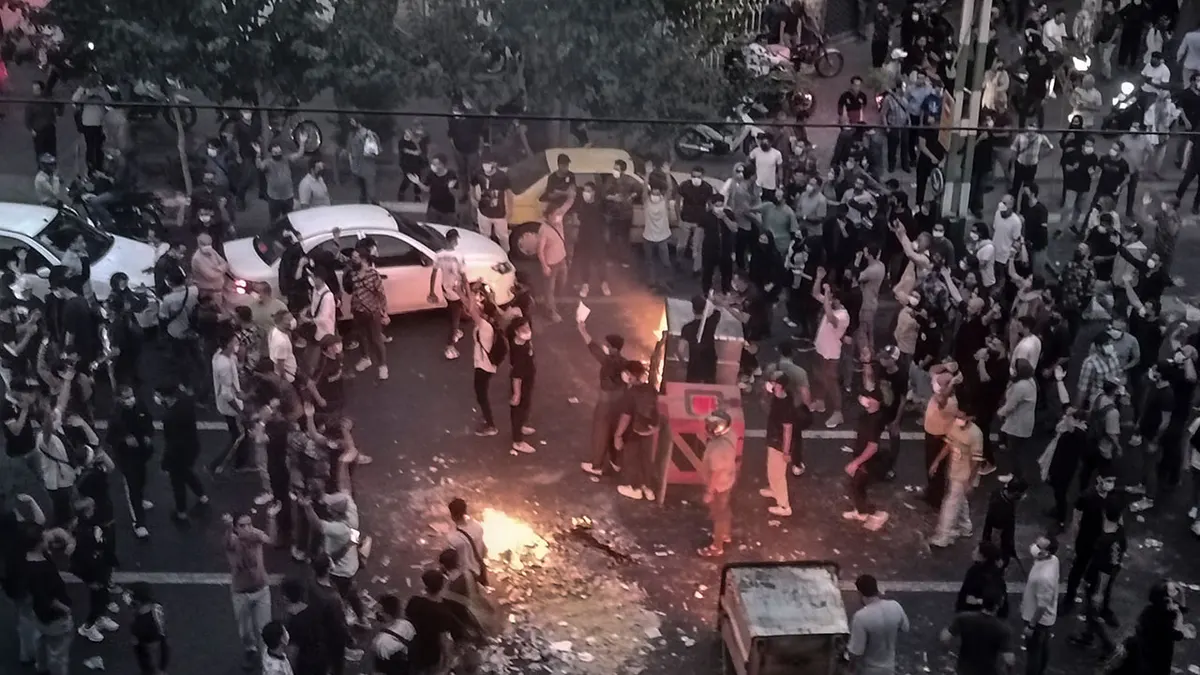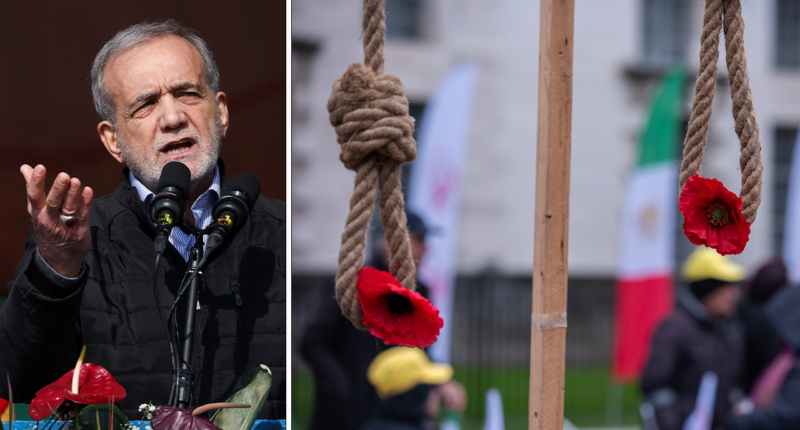Since President Masoud Pezeshkian assumed office on July 8, 2024, Iran has conducted 1,051 state executions, according to the National Council of Resistance of Iran (NCRI). This significant increase in executions, as highlighted by security experts, is a crucial factor for the U.S. to consider as it reengages in nuclear discussions with Tehran.
The reported figure from NCRI reveals a rise of over 20% compared to the previous year, with 853 Iranians being executed in 2023. This surge in state-sanctioned killings has garnered attention and calls for attention from the international community.
During his presidential campaign, Pezeshkian aligned himself with the faction of moderates and reformists who harbored dissatisfaction towards the regime after the controversial death of Mahsa Amini in 2022, which triggered widespread protests.

Iranians protest the death of Mahsa Amini’s death after she was detained by the morality police, in Tehran, Sept. 20, 2022. (AP Photo/Middle East Images, File)
“After suffering irreparable setbacks in the region and facing the growing threat of an uprising and overthrow, the regime has brutally accelerated executions and massacres,” she said in a statement to Fox News Digital.
She has also called on the Iranian people, “especially the youth,” to protest the executions by joining the “No to Execution” movement.
However, students across Iran face a real threat in opposing the regime, as Pezeshkian and Iran’s minister of education, Alireza Kazemi, have reportedly dispatched State Security Forces to tamp down on what Khamenei has deemed “cultural infiltration, the enemy’s lifestyle, and hostile temptations” targeting Iran’s youth.

















